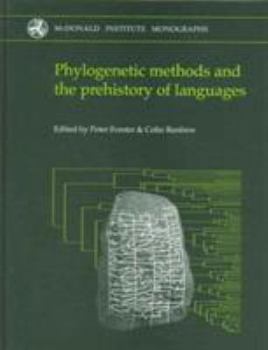Phylogenetic Methods and the Prehistory of Languages
Evolutionary ('phylogenetic') trees were first used to infer lost histories nearly two centuries ago by manuscript scholars reconstructing original texts. Today, computer methods are enabling phylogenetic trees to transform genetics, historical linguistics and even the archaeological study of artefact shapes and styles. But which phylogenetic methods are best suited to retracing the evolution of languages? And which types of language data are most...
Format:Hardcover
Language:English
ISBN:1902937333
ISBN13:9781902937335
Release Date:April 2006
Publisher:McDonald Institute for Archaeological Researc
Length:198 Pages
Weight:2.27 lbs.
Dimensions:0.7" x 8.6" x 11.1"
Related Subjects
Language ArtsCustomer Reviews
0 rating





